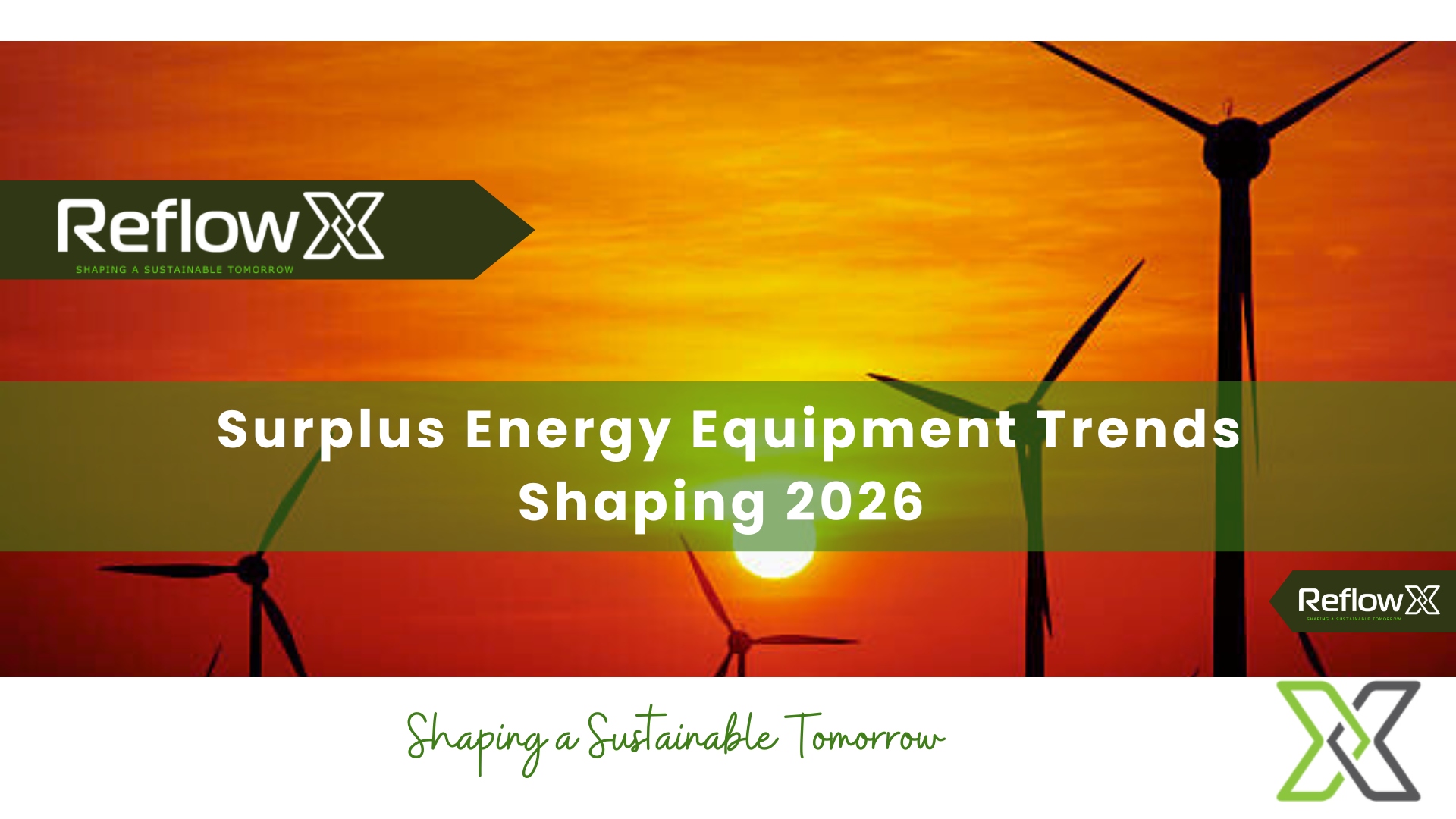
For decades now, people have been neglecting fossil fuels worldwide. This explains why the world’s supply chains for renewable energy are insufficient. This has also led to an increase in the need for renewable energy solutions. Additionally, manufacturers and developers are frequently exposed to a variety of supply chain management risks. However, several factors in surplus energy equipment trends will shape 2026. Wondering what those are? Here is everything you need to know.
Top Surplus Energy Equipment Trends
For the functioning of the world, gas and oil play a crucial role. From manufacturing to automobiles and even home heating, they are used for various purposes. However, extracting gas and oil from the earth and making it usable is a daunting task.
To make it happen, different machinery and equipment are required in the process. And if any equipment stops functioning properly, everything slows down. Since not every business can afford new machinery, companies now rely on used industrial equipment in 2025. Furthermore, the top surplus energy equipment trends are:
-
Sustainable Technologies
Eliminating waste and reducing costs are becoming more crucial than ever. Because sustainability is gaining huge attention, reusing and repurposing existing equipment is essential. As a result, this is giving rise to sustainable technologies.
It aids in increasing efficiency and reducing emissions effortlessly. Sustainability also helps companies attract more customers who appreciate eco-friendly ideas. In general, companies that do this not only reduce their carbon footprint but also enhance their reputation.
-
Energy Storage and Optimisation
Modern technologies can provide enough power, but they don’t offer affordable energy storage options. By proactively controlling consumer demand, energy storage allows for stable pricing. To maintain grid stability and a consistent supply of energy, energy storage is essential.
It is anticipated that the worldwide energy storage industry will surpass and grow further. This expansion is being driven by developments in smart systems, thermal storage, and lithium-ion batteries. Iron-air batteries and other long-duration energy storage (LDES) technologies are also being developed as a result.
-
Renewable Energy Expansion
Did you know that hazardous emissions from renewable energy sources are negligible or nonexistent? Yes, and switching to it contributes to environmental protection because of this. With developers expanding their proportion of the world’s electricity output, adopting renewable energy is a must.
The global energy equipment marketplace is anticipated to expand. Modern technologies that integrate solar energy with agriculture offer various advantages. Consequently, wind, solar, and land use are setting the standard.
-
Smart and Connected Systems
Another trend shaping 2026 is smart and connected systems. Smart grid integration is driving up demand for sophisticated control systems and sensors. This leads to both new acquisitions and excess equipment as older systems are modernised.
The energy industry is changing thanks to the integration of IoT sensors and AI-powered solutions. Real-time monitoring and optimisation of energy systems are made possible. Thanks to the growing use of smart diagnostic tools and predictive maintenance.
-
Digital Transformation
For sustainable energy asset recovery, online marketplaces are growing in popularity. The purchase and sale of excess industrial and energy equipment is another trend shaping 2026. For both buyers and sellers, this increases accessibility and efficiency.
Digital twins, artificial intelligence, and data analytics are essential elements of the digital revolution. These elements are changing the energy sector. AI integration is expected to save energy, predict equipment failure, and improve energy efficiency.
-
Blockchain
Blockchain technology creates a single decentralised network that unites all energy stakeholders. For instance, smart contracts could be beneficial for traders, distribution network operators, metering operators, etc. This ensures that all energy-related transactions will go through a secure network.
As a result, these contracts prevent possible losses. This also lowers the cost of electricity for more people. Blockchain has the potential to achieve some degree of equity between energy providers and consumers. Leveraging this, the energy sector can move towards an equitable future.
Impact of Surplus Equipment Energy Trends
Surplus energy trends have hugely impacted all. For instance,
- Stakeholders are showing more interest in renewable energy. They have been demanding to lower the cost of renewable energy due to the need of the hour.
- Prosumers, consumers, and energy producers are flooded with energy-efficient solutions.
- Various technologies have come up with innovative solutions, which can lower the cost of renewable energy sources, enhance storage capacity, or improve battery efficiency.
Overall, to gain a competitive edge, it is important to identify new opportunities ahead. More and more firms must use developing technologies in their operations.
Transforming Growth and How We Use Energy
At Reflox, we are a seamless marketplace for surplus energy equipment. By repurposing surplus materials, we aim for reduced waste and emissions. We help both sellers and buyers grow under one roof at our platform.
We offer you high-quality equipment at reasonable prices. You can rest assured about quality, as every piece of equipment goes through strict checks while adhering to industry standards. For further assistance, you can contact us anytime.
 Prev Blog
Prev Blog